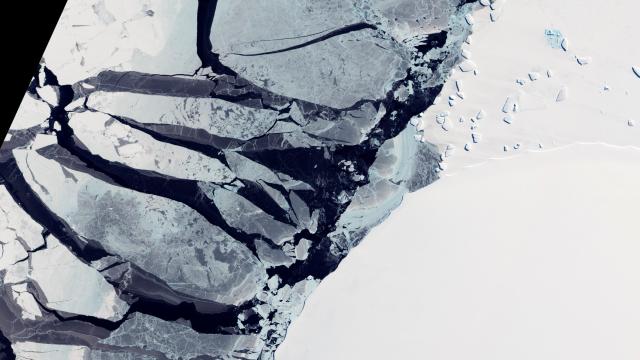A new paper suggests that the East Antarctic ice sheet may not be as stable as we thought. Looking at ancient melting, the study finds evidence that this piece of the Antarctic experienced melting 400,000 years ago when the world was 1 to 2 degrees Celsius warmer. Enough ice melted could have occurred here to raise the sea by about 3 to 4 metres.
Published in Nature on Wednesday, considered stable.
In 2017, a team of researchers uncovered evidence based on sediment data that suggested the region’s glaciers had undergone cycles of advance and retreat. This challenged the idea that this part of Antarctica had remained frozen for millions of years. In 2019, researchers found that the region is already seeing some ice loss, even if it’s minor compared to the destruction happening in West Antarctica where warm seawater is eating away floating ice shelves that buttress the land ice.
Now, this new paper further raises the alarm. Researchers at the University of California, Santa Cruz, University of Washington, and University of Kansas assessed three samples of subglacial sediment to see what minerals have accumulated beneath the ice historically. The team looked specifically at the Wilkes Basin, a huge swath of ice that covers an area roughly the size of France.
They were able to date the opal and calcite found in their samples, taken near the Pensacola Mountains and Elephant Moraine in East Antarctica, using specific uranium isotope that accumulates where rock and water meet for prolonged periods of time. Floating ice can trap those isotopes in place in the sediment record, but open ocean can flush them out.
The information contained in those samples paints a clear picture: East Antarctica has not been stable for as long as researchers initially thought. About 400,000 years ago, the samples indicate that ice receded in the basin and contributed to the massive sea level rise observed during that period.
“We were anticipating to find isotopic results suggesting that the ice within the Wilkes Basin of East Antarctic Ice sheet was stable on a much longer duration, more than a million years perhaps,” author Terry Blackburn, an assistant professor at the University of California, Santa Cruz, told Gizmodo in an email.
The paper would’ve benefited from having more samples taken across the ice sheet, but the team had to work with what was available. It’s not easy to sample one of the world’s most remote locations. These findings give us clearer expectations of what could come for the region, though more research needs to be done, including looking at how present-day ice evolves. The planet has currently warmed 1 degree Celsius above pre-industrial levels and is on pace to heat up even further, much as it did 400,000 years ago. While researchers have grown increasingly concerned parts of the West Antarctic ice sheet could face an unstoppable collapse, the new findings show some of the eastern portion of the continent could also face trouble.
“[These findings] do support the idea that future sea levels in response to warming will be much higher than present,” Blackburn said.
That puts coastal cities already dealing with chronic flooding in even more danger. Humans could stave off catastrophe, though, if leaders would finally move to end fossil fuel consumption once and for all.
